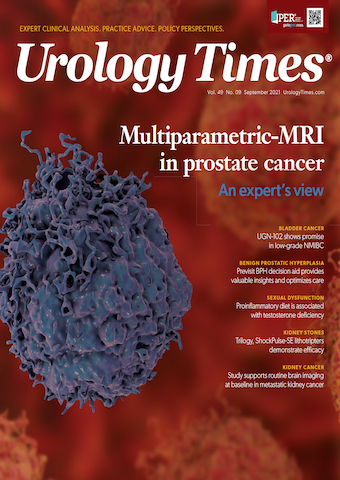Publication
Article
Urology Times Journal
Pre-visit BPH decision aid provides valuable insights and optimizes care
Author(s):
The research also showed that the decision aid was well-received by patients as both satisfaction of men who used the tool and their willingness to recommend their physician were very high.
A study investigating the impact of an online patient decision aid on management decisions for benign prostatic hyperplasia (BPH) among men scheduled for a urology consultation at the University of California, Los Angeles Medical Center, demonstrated feasibility of the pre-visit “virtual care” approach as a method for providing patient education, assessing patient goals, and preparing men for a shared decision-making visit with their physician.
The research also showed that the decision aid was well-received by patients as both satisfaction of men who used the tool and their willingness to recommend their physician were very high. In addition, the decision aid was found to reliably identify patients who had been referred to a urologist by their primary care provider without ever having tried medical therapy for BPH. Through responses to items designed to characterize patients’ values and goals for clinical risks and benefits, the decision aid also identified men for whom medication therapy would be an optimal next step, said Christopher S. Saigal, MD, MPH.
The project and its findings were reported in a recently published article.1 Saigal is Professor and Vice Chair of Urology, David Geffen School of Medicine at UCLA, and senior author of the paper. He told Urology Times®, “We found in our study that approximately one-third of men were being avoidably referred by their primary care provider to a urologist for BPH management because the men had never tried alpha-blocker therapy. In communities with limited urologist access and given the projected urology work force shortage, the decision aid could offer an important benefit by identifying patients who could be seen by a practice’s nurse practitioner or physician assistant. This could free up time for the urologist to see more complex patients or those who might need surgery.”
He continued, “The larger message from this study is that I think the future of urology practice will involve leveraging software-based approaches, including decision aids, to improve our ability to manage our large practices in a variety of ways. Done well, such workflows can enhance patient-centered, guideline-concordant care while freeing the clinic encounter to be a place where the high touch ‘art of medicine’ can be practiced.”
English-speaking men ages 18 to 85 years who were scheduled for a new patient visit with a urologist because of BPH were invited to complete the decision aid prior to their appointment. A total of 155 patients with a mean age of approximately 66 years participated in the project.
After their clinic visit, men were asked via telephone survey whether their preferred treatment was with pills/oral medication, procedures (including anesthesia- and office-based), other, or if they were unsure. Only 10 men (6%) self-reported a preference for a BPH procedure, and that rate was significantly lower than in a “usual care” comparator group who did not complete the decision aid.
Analysis of the responses on the completed decision aids also identified 2 distinct groups of men based on their preferences for clinical outcomes such as “importance of symptom improvement” and “importance of avoiding retrograde ejaculation.” Relative to 1 group, the other group of men placed greater emphasis on avoiding sexual dysfunction, dizziness/weakness, and retrograde ejaculation and more importance on BPH symptom improvement.
“Most urologists realize that the constellation of BPH outcomes represent a series of ‘trade-offs’ for patients. We were able to cluster the trade-offs and identify a group that would seem more likely to have a ‘preference match’ for surgery ahead of time,” Saigal said.
“This latter group was small, including only 5 men, but 4 of the 5 men with this preference profile had identified a procedure as their preferred treatment whereas all men who chose medication fell into the other preference profile group. Thus, our study shows that segmentation of patients by preference profile is possible and represents a possible avenue to establish treatment appropriateness.”
Saigal and colleagues have done similar work investigating the impact of a decision aid in men with prostate cancer and are presenting the findings at the American Urological Association annual meeting in September.
Reference
1. Sadik JE, Lambrechts S, Kwan L, et al. Management patterns for benign prostatic hyperplasia: impact of a patient decision aid. Urology Practice. 2021;8:523-528. https://doi.org/10.1097/UPJ.0000000000000234

Newsletter
Stay current with the latest urology news and practice-changing insights — sign up now for the essential updates every urologist needs.

























